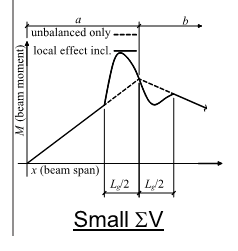steveh49 said:
I also don't know the procedure of delegated connection design...however since it appears that this is just a rebadging of St Venant's principle - is that correct?
Absolutely on the later. I only ever design connections for small projects and not often are braced frames, and never chevron types. I have only ever used the uniform force method since all of my braced frame connections have been brace to column - very straightforward in most cases.
For delegated designs, I have always proceeded as if the connection engineer should take care of local effects and report back if there were issues that could be more economically resolved by increasing member size. A typical example would be moment frames. RAM Structural System will check WF column joints and report if column stiffeners, doublers, etc. will be required, but it will not provide a design of same. Thus, where required, my connection detail notes instruct the connection engineer to check all local effects on member (wall plastification, etc.). Until I came across this paper, I thought my instructions to the connection engineer would be sufficient. It seems that it may not be true in all cases, as the paper asserts that conventional local effect analysis of chevron connections by delegated designers do not always capture the effects properly, and sometimes by a great margin
(see edit to this comment below). Maybe I am missing something, but that is my takeaway. If this is true, I appreciate the paper if only for me to keep this in mind when designing and reviewing connection calcs.
steveh49 said:
The bending moments attributed to the connection designer (eg +/- 3502 on page 119) look ridiculous.
After re-looking at the diagrams, I think I may have myself confused on the intent of the topic. The 'conventional' design of these connections do seem to have huge moment increases as you point out. The so-called symbiotic method has moment increases that are much less. So, does this mean that true issue is that connection designers are actually designing for unnecessarily high local effects, and that EOR's are often under-sizing beams, resulting in a lot of stiffeners/plating? If this is true, even if I used the CE method in member design (and communicate same to connection engineer), the issue isn't mitigated unless the connection engineer analyzes in the same manner. How likely is it that I can force the connection designer to do this?
-Mac

